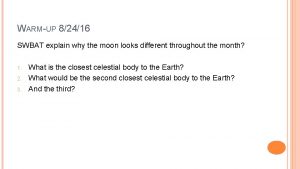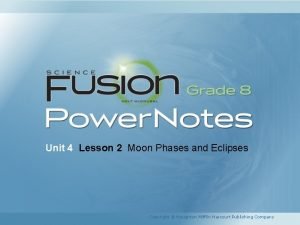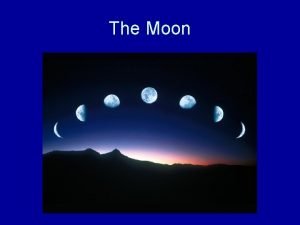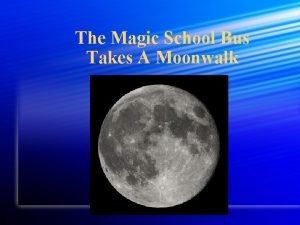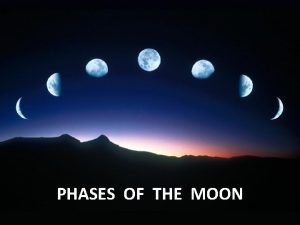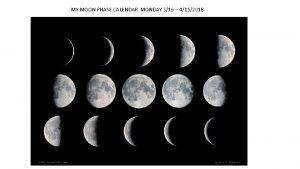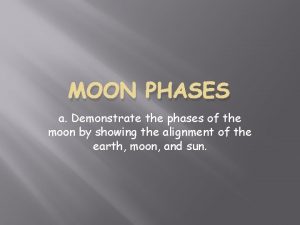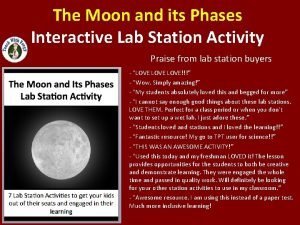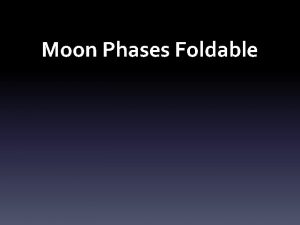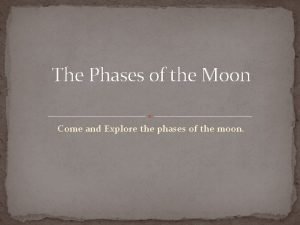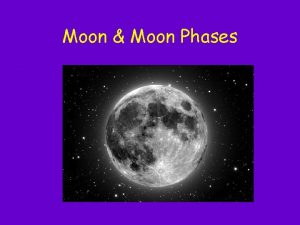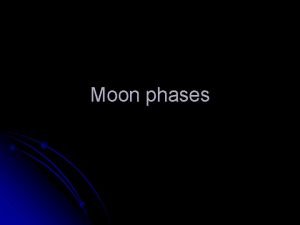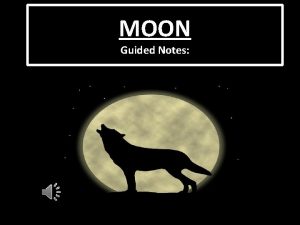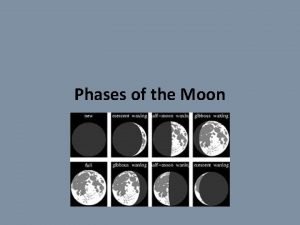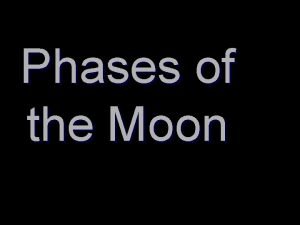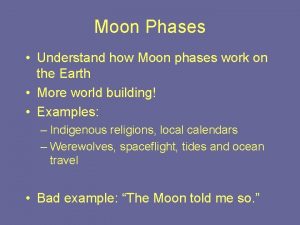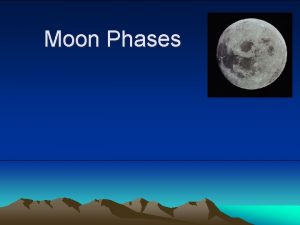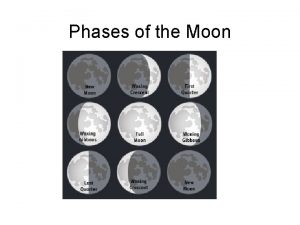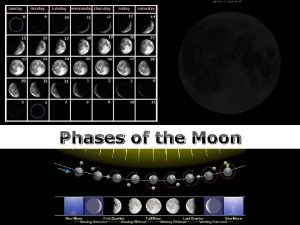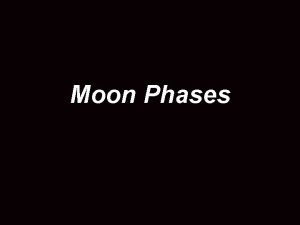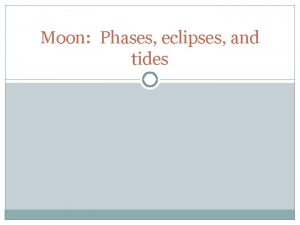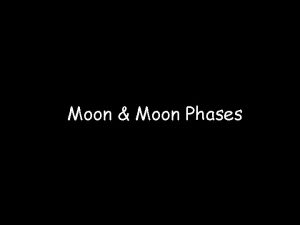Moon Phases New Moon Moon is so close















- Slides: 15

Moon Phases • New Moon: Moon is so close to sun that the side of the Moon Facing Earth is not Illuminated. • Full Moon: Moon is behind Earth in space with respect to the Sun. As sun sets Moon is fully exposed to sunlight.

Moon Phases -Names 1. New Moon 2. Waxing Crescent 3. First Quarter 4. Waxing Gibbous Moon 5. Full Moon 6. Waning Gibbous 7. Last Quarter Half Moon 8. Waning Crescent

Earth Circumference • Earth is classified as an oblate spheroid or ellipsoid. – Not a true sphere

Earth’s Circumference • Circumference around equator is larger than around the poles.

Earth’s Circumference • The equatorial bulge at Earth’s equator is caused by the planets rotation and gravity. • Naturally, gravity causes planets and other celestial bodies to contract and form a sphere. • The mass of an object as close to the center of gravity (Earth’s core in this case) as possible.

Introduction Sun Video • http: //www. watchknowlearn. org/Video. aspx? Video. ID=132 28&Category. ID=2824

The Sun - Fun Facts • 1 of 100 billion stars in the Milky Way Galaxy. • The Sun is not significant to the Universe, but it is our Solar Systems main source of energy. • Earth receives all of its energy from the Sun. – Food web – Energy sources

Structure of the Sun • The Sun can be divided into four parts: – Solar interior – Photosphere (visible surface) – Chromosphere (atmospheric layer) – Corona (atmosphere layer)

The Active Sun • Sunspots – A sunspot is a dark spot on the sun that is cool in contrast to the surrounding photosphere (visible surface) – Appear dark because of their temperature, about 1500 K less than the surface

The Active Sun • Prominences – Are huge cloudlike structures consisting of chromospheric gases. – Prominences are ionized gases trapped by magnetic fields that extend from regions of intense solar activity.

The Active Sun • Solar Flares – Solar flares are brief outburst (last about an hour) and appear as a sudden brighten of the region about a sunspot. – Solar flares release enormous amount so energy, much of it in the form of ultraviolet, radio, and X-ray radiation. – Auroras (Northern/Southern Lights) are a result of solar flares interacting with the upper atmosphere of Earth.

The Sun’s Energy *Remember Sun is spelled with a U. s. Un f. Usion • Nuclear Fusion – Is the way the sun produces energy. – Reaction converts 4 hydrogen nuclei into a helium atom creating an incredible amount of energy. – Energy is released because matter (hydrogen atom) is converted into energy.

Our Nuclear Energy Fission + energy • Here on Earth we can create energy as well, but not like the Sun. • Nuclear Power Plants use fission to create energy. – Splitting atoms into two or more parts plus energy. • The Sun uses fusion. – Two or more atoms coming together to make one atom plus energy. Fusio n + energy

Sun & The Electromagnetic Spectrum •

 Which moon phase occurs directly before a new moon
Which moon phase occurs directly before a new moon Which moon phase occurs directly before a new moon
Which moon phase occurs directly before a new moon Moon phases when the sun is on the left
Moon phases when the sun is on the left Lesson 2 moon phases and eclipses answer key
Lesson 2 moon phases and eclipses answer key A person standing in the moon's penumbra will see a
A person standing in the moon's penumbra will see a Magic school bus moon phases
Magic school bus moon phases Moon phases
Moon phases Hawaiian moon phases
Hawaiian moon phases What causes the phases of the moon?
What causes the phases of the moon? What causes the phases of the moon
What causes the phases of the moon Moon phases when the sun is on the left
Moon phases when the sun is on the left Moon phases and eclipses
Moon phases and eclipses Moon phases interactive notebook
Moon phases interactive notebook Moon phases foldable
Moon phases foldable Moon phases foldable
Moon phases foldable Whats the first phase of the moon
Whats the first phase of the moon


